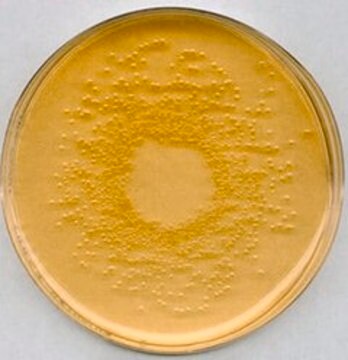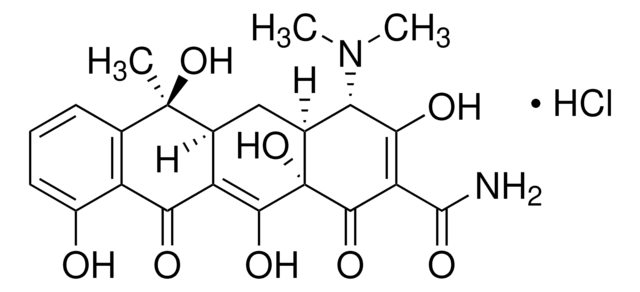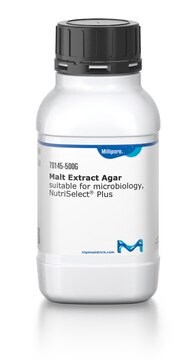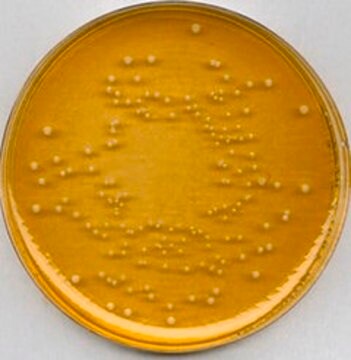75315
OF Test Nutrient Agar
suitable for microbiology, NutriSelect® Basic
Synonym(s):
Oxidative Fermentative Agar acc. to Hugh a. Leifson
About This Item
Recommended Products
sterility
non-sterile
Quality Level
product line
BioChemika
form
powder
shelf life
limited shelf life, expiry date on the label
composition
agar, 2.5 g/L
bromothymol blue, 0.08 g/L
casein peptone (pancreatic), 2 g/L
dipotassium hydrogen phosphate, 0.3 g/L
sodium chloride, 5 g/L
manufacturer/tradename
NutriSelect® Basic
technique(s)
microbe id | utilization test: suitable
microbiological culture: suitable
final pH
7.1±0.2 (25 °C)
antibiotic activity spectrum
Gram-negative bacteria
application(s)
agriculture
clinical testing
environmental
food and beverages
microbiology
suitability
Alcaligenes spp.
Chromobacterium spp.
Moraxella spp.
Pasteurella spp.
Acinetobacter spp.
Aeromonas spp.
flavobacteria
nonselective and differential for Bordetella spp.
nonselective and differential for Campylobacter spp.
nonselective and differential for Enterococcus spp.
nonselective and differential for Escherichia coli
nonselective and differential for Pseudomonas spp.
nonselective and differential for Salmonella spp.
nonselective and differential for Shigella spp.
nonselective and differential for Vibrio spp.
nonselective and differential for Yersinia spp.
nonselective and differential for bacteria (General Media)
nonselective and differential for coliforms
nonselective and differential for enterobacteriaceae
Application
Preparation Note
Other Notes
Footnote
The designations basic, plus, or prime are added to indicate the quality control level, from basic quality control to standard QC plus to prime for full regulatory compliance.
Legal Information
Storage Class Code
11 - Combustible Solids
WGK
WGK 2
Flash Point(F)
Not applicable
Flash Point(C)
Not applicable
Personal Protective Equipment
Choose from one of the most recent versions:
Already Own This Product?
Find documentation for the products that you have recently purchased in the Document Library.
Customers Also Viewed
Articles
Vibrios are motile, curved or comma-shaped bacilli and have a single polar flagella with sheet proteins. They are often found in open water, freshwater and saltwater.
On the Trail of Campylobacter - The Campylobacter is one of the leading causes of human gastroenteritis. Common Campylobacter species C. jejuni, C. coli, and C. lari are responsible for most cases of campylobacteriosis. However, other species, like C. fetus, which causes spontaneous abortions, have also been associated with human illness. Campylobacter are Gram-negative, spiral-shaped, microaerophilic and motile bacteria with uni- or bi-polar fl agella
Campylobacter spp. are regarded as the leading cause of bacterial gastroenteritis in humans worldwide.
Salmonella contamination is the second leading cause of food-borne illness worldwide. Controlling outbreaks of Salmonella is an important task for food regulators, restaurants and the food industry in general. The Salmonella family includes over 2,300 serotypes of bacteria, but two types, Salmonella enteritidis and Salmonella typhimurium, are responsible for about half of all human infections. Most outbreaks of Salmonella are traced back to dairy, poultry and meat products, but Salmonella can grow on nearly any food. Chicken, eggs and their derivative products are particularly high risk.
Our team of scientists has experience in all areas of research including Life Science, Material Science, Chemical Synthesis, Chromatography, Analytical and many others.
Contact Technical Service













